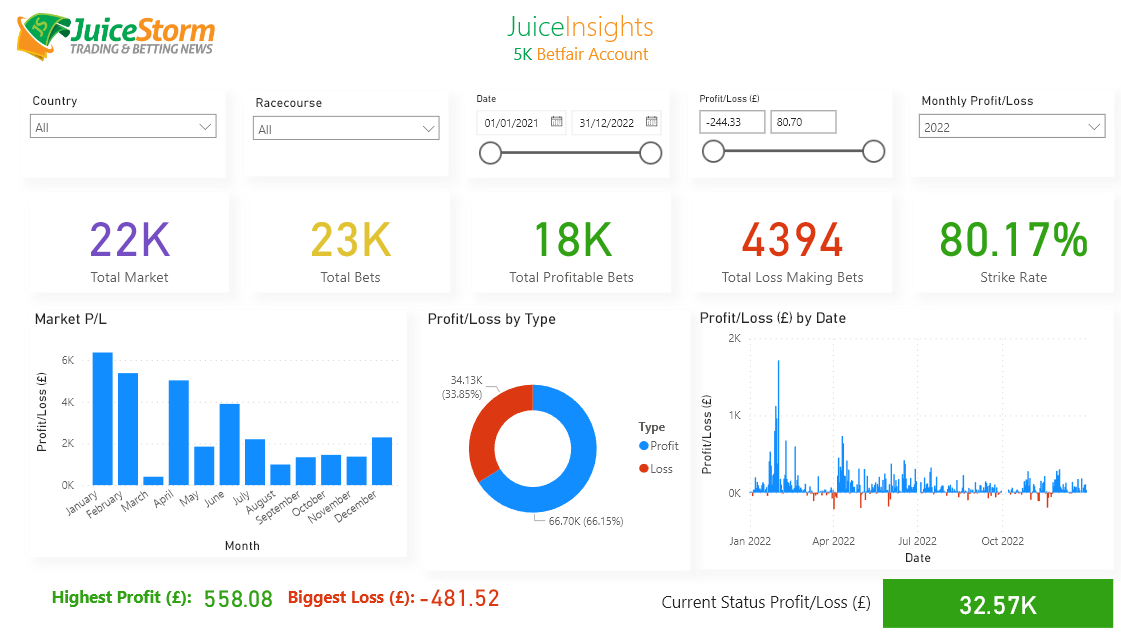Trading Greyhound Markets – Basic Hints
Article by Alistair Hamilton.
Here’s some basic hints on how to trade the greyhound markets, what to look out for – and be wary off. Many people stay clear of the dogs due to lack of liquidity and I understand that. I certainly wish I could use bigger stakes at times. Still, there’s money to be made and some may find the quieter markets of the dogs easier to handle than the frenetic pre-race horse markets.
Much of this article was published on my blog, but it has since become buried in the archives and difficult to find.
Like any market that you can trade on the exchanges, there is no substitute for putting the hours in, watching how the markets behave and practice, practice, practice.
I honestly cannot tell you ‘how’ I trade the greyhounds as it has become, after watching thousands of races over the months, almost instinctive. An instinct that still goes awry at times. My style, if I can call it that, varies depending on the market, the liquidity and my mood. I’m also constantly trying new things, many of which don’t come off.
However, for the purposes of this exercise, I’ll list a few points that you should be aware of that will hopefully help you trade the greyhounds. Some are obvious I guess and may seem patronising. That is not my intent. I’m simply including them for completeness.
So, here they are, in no particular order…
1. As with any market, do NOT enter with more money than the market can support. It’s easy getting matched, but you might never be able to trade out again. You’ll be force to trade out with a big ‘red’, or worse, let the trade stand as a bet.
2. The greyhound markets vary greatly in liquidity during the day, particularly when other major sporting events are on such as horse racing or big soccer matches. Plan your day, and your stake size, accordingly. The morning card, from 11:00am to 2:00pm is a good time, as is after the afternoon horse racing card finishes. The evening card can be abysmal and many times it is not worth the effort, though money can be made if you are patient.
3. Except in very liquid markets, such as the Sky televised meetings today, do not enter the market too soon. Two minutes before the off is soon enough. Even then, you may need to wait until the last minute. That’s when all the money starts to arrive.
4. Generally, the time keeping is good, but occasionally races jump a few seconds early. To minimise this, make sure your computer clock is synchronised to an atomic clock via one of the many time servers on the Internet. You should be able to do this via your operating systems time settings. Also…
5. Make sure you listen to William Hill radio. This provides additional warning when the race is about to go. A word of warning though. Some of their commentators are better than others, so get to know which ones you should be wary off. Also, take care during the busy evening cards where they may nip off to another racetrack that Betfair isn’t covering. It’s very easy to get confused as to what race they are talking about.
6. While on the subject of William Hill radio, pay attention to what they are saying about the race. Some of their commentators really know their stuff. It wouldn’t be the first time I’ve seen a dog suddenly shorten directly after it has been tipped on William Hill.
7. Just like the horse markets, the odds ‘breakpoints’ where the tick size changes can see points of resistance develop. The most prominent of these in the dog markets is 4.00. Personally, I’m wary of trading around this level. I always seem to muck it up. There are weaker resistance points at 3.00 and 6.00.
8. Keep an eye out for a ‘jumpy’ runner. You will frequently come across a dog whose price is rapidly bouncing between to points. These points can often have a gap of 5-10 ticks. The ‘bouncing’ might last for 10-20 seconds but you can make a tidy sum just clicking on both sides of the ladder without waiting for any one being matched. If you can manage to do that a few times before it stops, you’ll be laughing.
9. Be wary of leading the charge. In other words, if you are going to go to the front of the market, make sure there is money behind you lending support. It wouldn’t be the first time I’ve seen all the money behind me suddenly disappear as soon as my initial position is matched. Damned hard to get out of those.
10. In a bags race, watch out for a very short favourite, particularly if that dog has been coming in in the run up to the race. You can make nice profit on them as they come in. However, frequently, particularly towards the end of the session, large sums of money will come in and take the price out by 10-20 ticks, sweeping all before it, including your back stake, with little or no time to get out without ‘redding’ up for a substantial hit.
11. In an OR race, there is almost always a short priced favourite. These tend not to be prone to sudden, large scale reversals. That’s not to say they don’t happen, but in my experience it doesn’t happen anywhere near as much in open races.
12. Unlike the horse win markets, the dog markets are jumpy due to lack of liquidity. This puts many people off. I’d say, learn to make use of it. Study the markets, make use of the many gaps that are there. Before you know it, you’ll find yourself frequently picking up 5, 10, 20 tick trades.
13. All the money, what there is of it, tends to concentrate on the 1st and 2nd favourites. That’s where I predominantly ply my trade. However, there’s money to be made on the longer odds dogs. You may have to use smaller stake sizes in order to get matched but you should see some decent movement there.
14. Don’t be scared of taking on a large amount, particularly if it is unsupported. That money will sit there for a while then disappear. This is why I say be wary of using just WOM in your trading. In this case the WOM would indicate you enter the trade on that side of the market but, in actual fact, you should oppose it. If you are not comfortable doing this then leave it alone.
15. I’ve read in the past that because of the lack of liquidity in the greyhound markets, you’ll have difficulty finding trends. Absolute nonsense. Trends are there. They happen in every race. It’s just that they occur over shorter timescales.
A while ago, I posted some sample graphs demonstrating that fact. I use graphs all the time.
16. Because the money arrives so late in the market, and even if you are diligent in monitoring the off time, you WILL get caught. Whether you’re caught with a back or a lay in the market, over time, the results of these mishaps will even out. What’s important is that you have enough left in your bank to carry on in the meantime. So don’t go staking your whole bank on the dogs. You just know it will end in tears.
17. With well over 50 races each day, sometimes nearer 100, you do not need to earn lots of money per race to make a decent income. I regularly hit £1/race on average and I’m now working on increasing that figure. Even making £0.50/race can quickly add up over a month to a nice tidy sum, so do not be greedy.
Again though, the best advice I can give is to watch the markets – there’s plenty to choose from every day – and practice, practice, practice.






Comments are closed, but trackbacks and pingbacks are open.